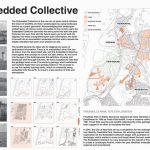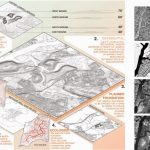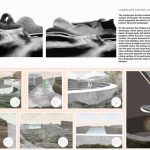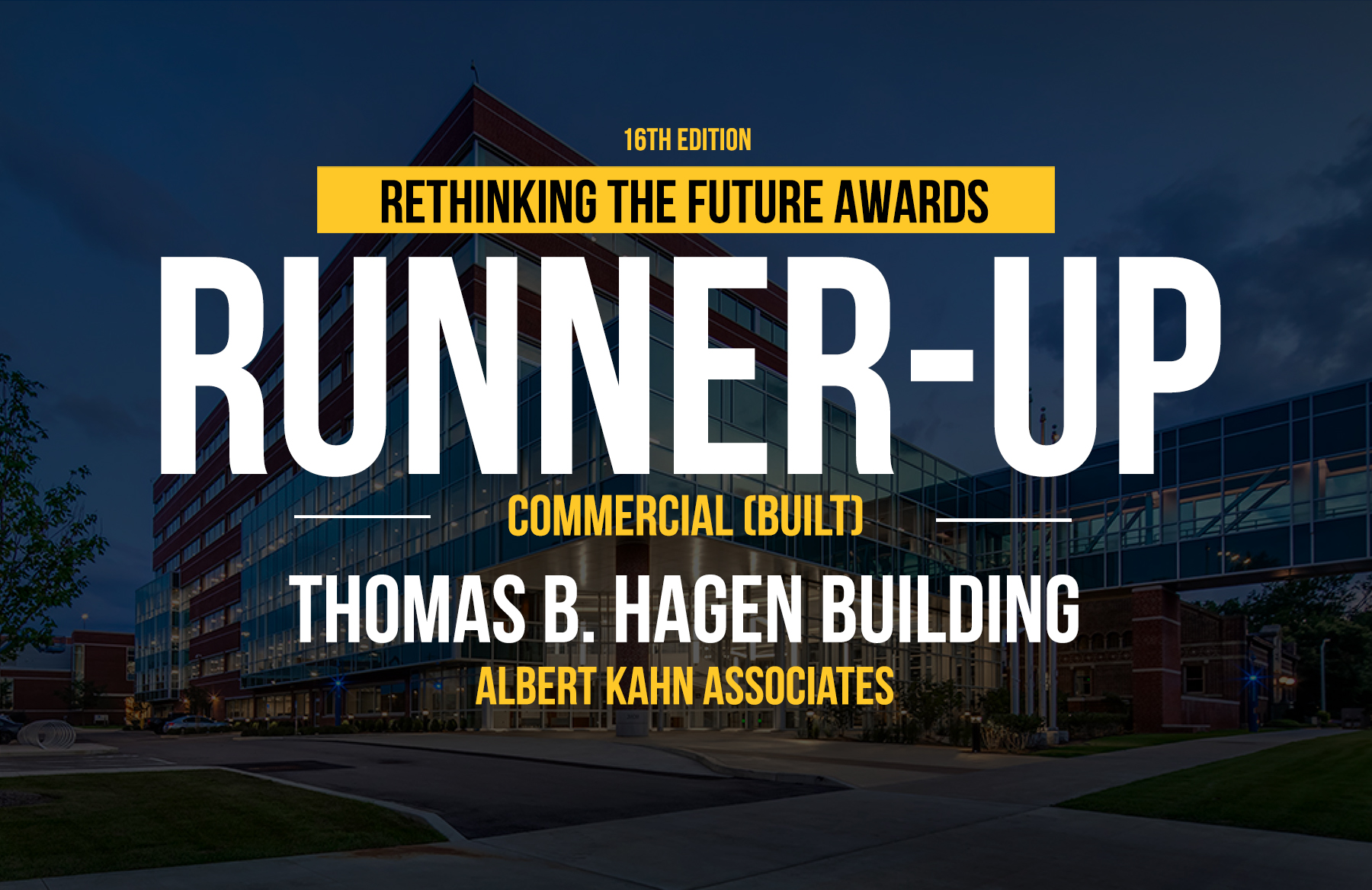Freshkills Park in Staten Island has experienced many identities over the past century. Established in 1948 as Fresh Kills landfill, it was a massive collector of human waste. By 1991, Fresh Kills was the sole landfill collecting the cities garbage. Presently, the landfill has been capped in an effort to remediate the land.
Second Award | RTFA 2017 Awards
Category: Landscape Design (Concept)
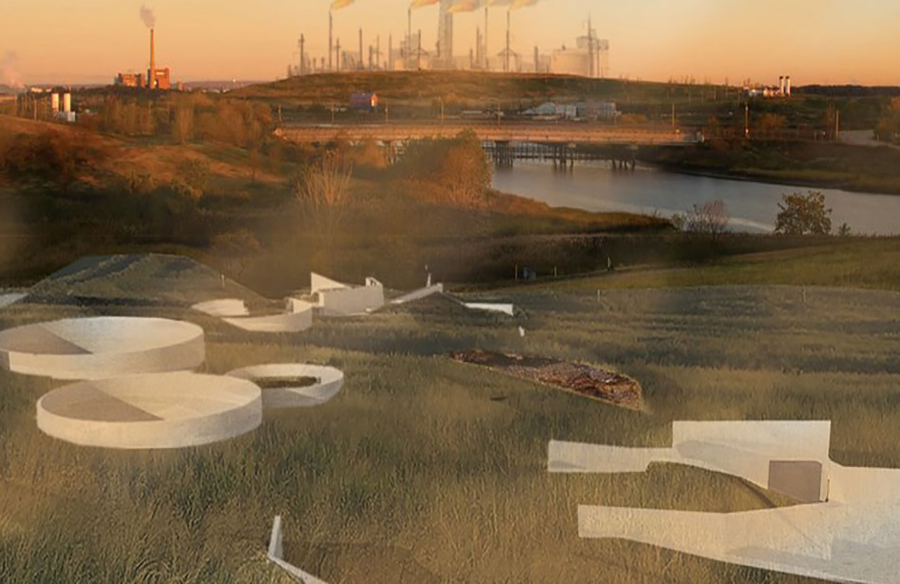 Participant Name: Kaitlyn Burzon & Karissa Campos
Participant Name: Kaitlyn Burzon & Karissa Campos
Country: United States
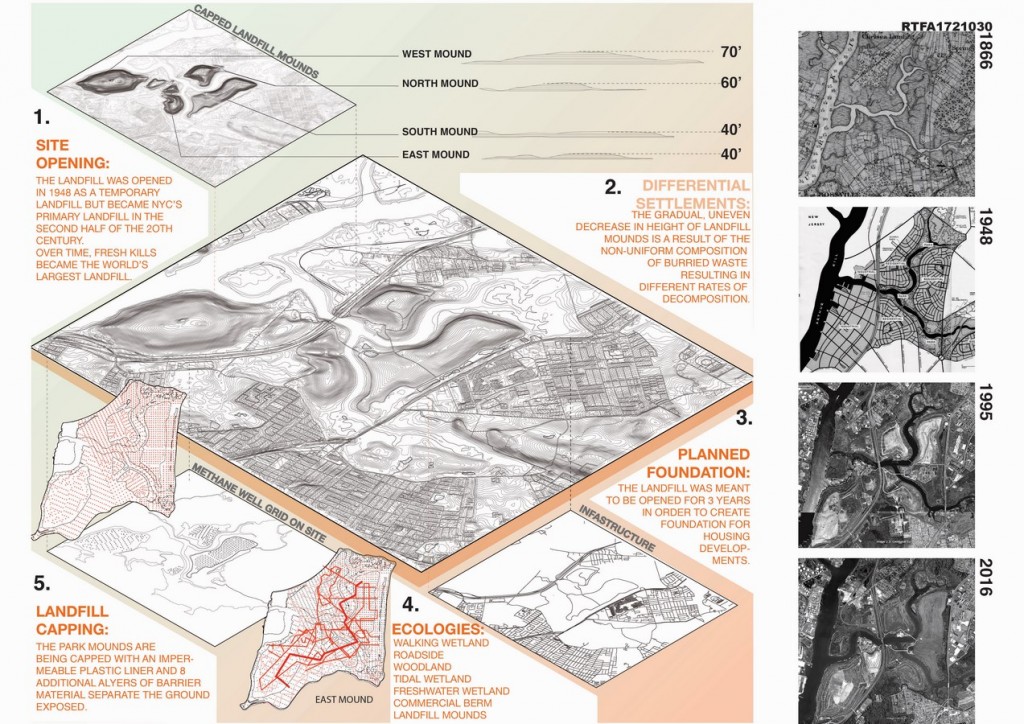
©Kaitlyn Burzon & Karissa Campos
In 2001, the City of New York set up a competition for the redesign of the land, creating a new identity; Freshkills Park. However, the winning proposal was just that; a facade. The exploration for the Embedded Collective began with pushback to the proposed facelift of the landscape, which wishes to cover and forget about the toxic wastescape buried underneath. The Embedded Collective is a new proposal for the rebuild of Freshkills Park with an ambition to create a Landscape Archive, where the past identities embedded into the land can be explored and remembered.
The Embedded Collective is the new era of parks which rethinks the future of landfills and toxic wastescapes by using landscape history as a space generator. Acknowledging that landscapes embed layers of history rarely accessible to the current users the Embedded Collective becomes the entry point into both the past histories lost over time and the future layers yet to be built. By tapping into these unexploited layers pure information, the earth is turned into an accessible Landscape Archive which reveals the hidden identities that were once present on site.
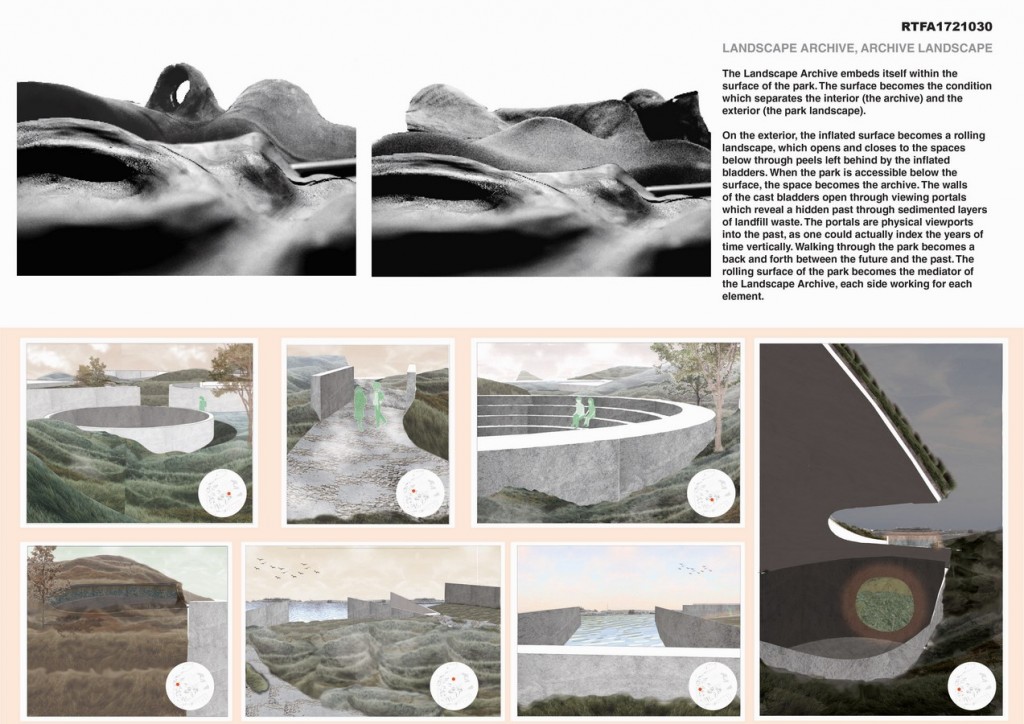
©Kaitlyn Burzon & Karissa Campos
The landfill became the ideal site for digging into years of sedimented information. There is an unexploited value that can be drawn from the desecrated site, and the Embedded Collective interrogates that concept to a level not seen before. As we move into the age of the Anthropocene the definition of parks and landscape shift through that lens. We have accepted the idea that the garbage dump is the 21st-century geology, which sediments and collects faster than any geology before it. The concept is to use this rapidly layering waste, which is constantly being embedded into the earth, to reveal a cross section of time and atmosphere.
- ©Kaitlyn Burzon & Karissa Campos
- ©Kaitlyn Burzon & Karissa Campos
